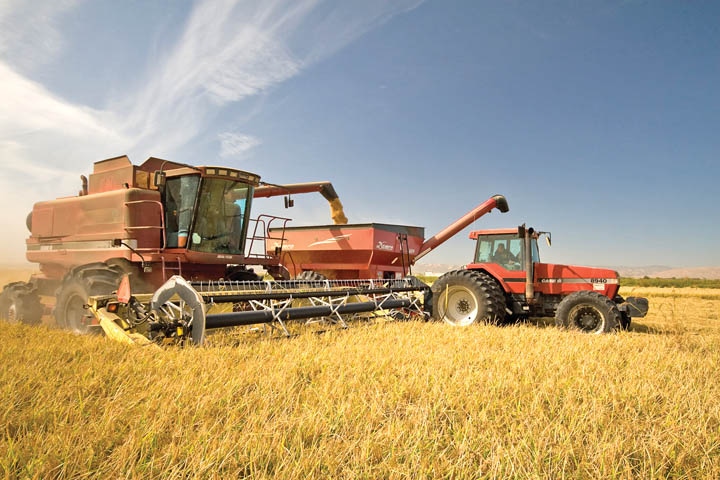
What caused the global food crisis?
The recent ups, downs, and back ups of the agricultural commodity markets have everyone trying to figure out what is behind the wide price swings of the past four years.Potential, oft-mentioned causes make for a very long list. Do all these “causes” belong on the list? Which ones are of most importance?
December 30, 2010

The recent ups, downs, and back ups of the agricultural commodity markets have everyone trying to figure out what is behind the wide price swings of the past four years. The October 2006 close on the Chicago Board of Trade nearby futures was $2.32 per bushel. By July 2008, just 20 months later, the close was $7.24, a 212 percent increase. Eight months later, the February 2008 close was $3.5075, a drop of 52 percent. Corn prices then began to turn around reaching an October 2010 close of 5.82, 150 percent above the price four years earlier. Soybeans, wheat and rice have followed similar, but more muted paths.
Potential, oft-mentioned causes for this market behavior have included: the increased use of corn to produce ethanol, a growing middle class in China and India demanding a diet that includes more meat, increases in the price of crude oil, the growing impact of index funds in the futures market, low interest rates, changes in the exchange rate of the U.S. dollar, market intervention by various countries in response to food riots, a declining rate of growth in grain production, and a reduction in the stock levels of various grains. That is quite a list. Do all these “causes” belong on the list? Which ones are of most importance?
An IFPRI (International Food Policy Research Institute) Research Monograph, Reflections on the Global Food Crisis: How did it happen? How has it hurt? And how can we prevent the next one?, by Derek Headey and Shenggen Fan and released in November 2010, wades into these issues, http://www.ifpri.org/sites/default/files/publications/rr165.pdf.
The study was “finalized in early 2010” and does not reflect the recent upward movement of agricultural commodity prices. One of the overriding concerns of the study is the impact of sharp changes in agricultural prices on impoverished people.
As the authors write: “Many impoverished people depend on food production for their livelihoods, and all poor people spend large portions of their household budgets on food. Sharply rising prices offer few means of substitution and adjustment, especially for the urban poor, so there are justifiable concerns that millions of people may be plunged into poverty by this crisis, and that those who are already poor may suffer further through increased hunger and malnutrition.”
Primary causes
The three primary causes identified by Headey and Fan in Chapter 2 are: 1) demand for biofuels, 2) the decline of the U.S. dollar and the concomitant rise in oil prices, and 3) “the influx of foreign exchange reserves for energy-exporting countries significantly [strengthening] their demand for U.S. cereals.”
Headey and Fan write, “the use of maize for ethanol grew especially rapidly from 2004 to 2007, and ethanol production used 70 percent of the increase in global maize production.” As a result, “the diversion of the U.S. maize crop from food to biofuel uses constitutes the largest source of international biofuel demand and the largest source of demand-induced price pressure.” In the Summary, they “find that the surge in U.S. maize production for biofuels was of an order-of-magnitude equivalent to the primary explanation of the 1972–74 crisis—the surge in U.S. wheat exports to the Soviet bloc. They also note that the surge in demand for corn to produce ethanol took place in an environment of declining stock levels of grains.
In looking at oil prices, the authors again recall the earlier crisis, writing, “rising oil prices were closely associated with the 1972–74 crisis and indeed were arguably the dominant factor….On the supply side, oil and oil-related costs constitute a substantial component of the production of most commodities, so rising oil prices provide a strong explanation of commodity-price escalation across a wide range of food and nonfood commodities….Agriculture is second only to transport in the oil intensity of its energy usage, suggesting marginal costs in agricultural production could be quite sensitive to oil prices.” Their analysis then implies that increased energy prices in the production of agricultural commodities are directly passed along to consumer prices.
“On the demand side, the biofuels sector sustained maize demand because of ongoing high oil prices. For the authors, the increase in oil prices is linked to the decline of the U.S. dollar, allowing oil exporting countries to maintain a stable income.
Of the three principal causes they identify for the agricultural commodity price spike, they spend the least time documenting their assertion that “rising energy revenues also fueled increased cereal demand from energy-exporting nations.”
Topics that they dismiss as causes of the crisis include strong growth in demand, especially from China and India; productivity decline and falling research and development; declining stocks and reserves; low real interest rates; speculation in financial markets; export restrictions (except for rice); and droughts.
In the coming weeks we will look into the IFPRI argument in greater detail.
Daryll E. Ray holds the Blasingame Chair of Excellence in Agricultural Policy, Institute of Agriculture, University of Tennessee, and is the Director of UT’s Agricultural Policy Analysis Center (APAC). Harwood D. Schaffer is a Research Assistant Professor at APAC. (865) 974-7407; Fax: (865) 974-7298; [email protected] and [email protected]; http://www.agpolicy.org.
You May Also Like



